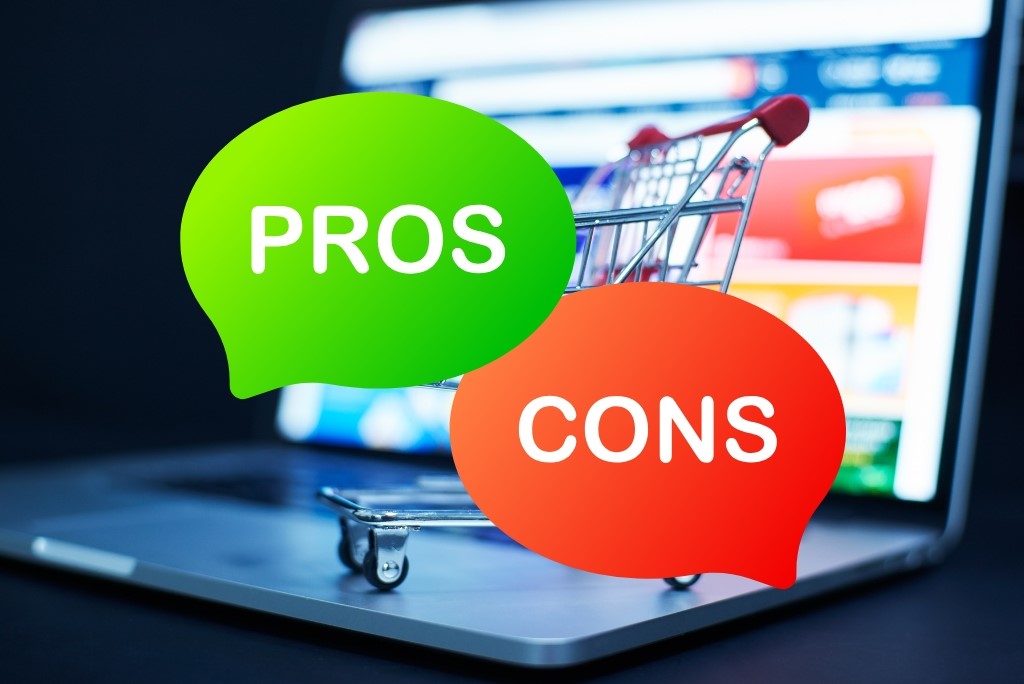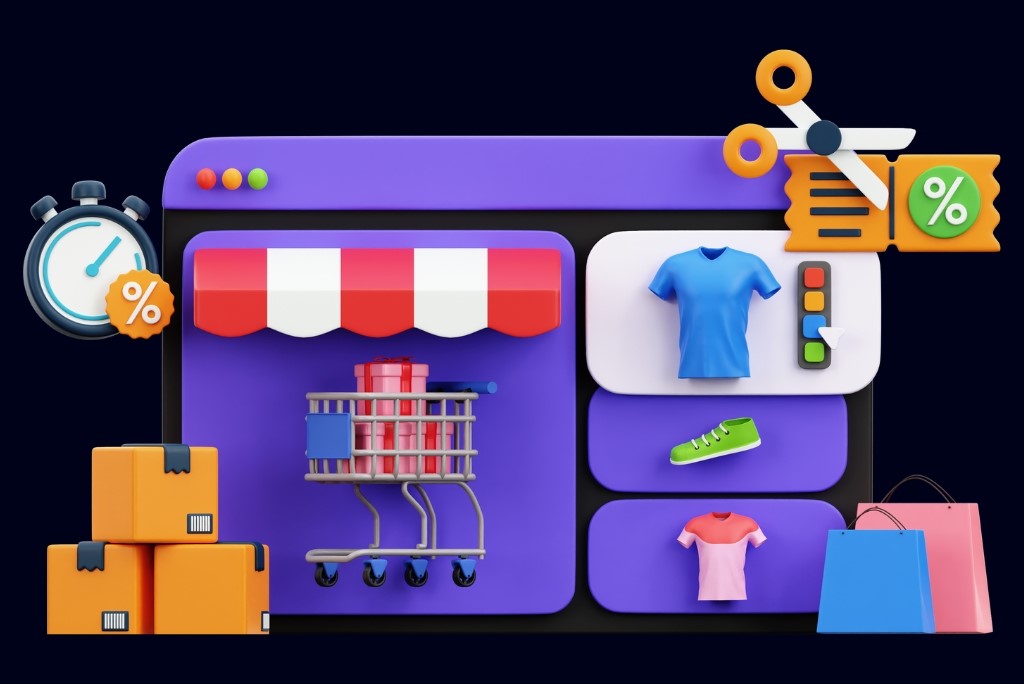Pros and cons of dropshipping | Is it right for you?

Starting a dropshipping business can be a game-changer for budding entrepreneurs, but is it truly the right choice? In this guide, we’ll dive into the benefits and drawbacks of dropshipping to help you decide.
Table of contents

What is dropshipping?
Dropshipping is a business model where you, as the seller, don’t keep any inventory on hand. Instead, when a customer places an order, you purchase the item from a third-party supplier, who then ships it directly to the customer.
This setup allows you to sell products without managing stock, making it an attractive option for first-time entrepreneurs looking to launch an online store with minimal risk.

Pros of dropshipping
Dropshipping offers several advantages that make it ideal for new entrepreneurs. Here are the key benefits to keep in mind:
No upfront inventory
With dropshipping, you don’t need to purchase or store inventory upfront. This reduces start-up costs significantly and eliminates the need for warehousing, packaging, or shipping.
Additionally, it lets you experiment with new products without risk, or handle overflow if your regular stock runs out.
Quick and simple setup
Dropshipping is easy to set up, especially with platforms like Shopify and WooCommerce, which simplify creating and managing your online store.
Once you’ve chosen a niche and found a reliable supplier, these platforms provide tools to quickly list products, customize your store, and start selling. This makes dropshipping an ideal choice for beginners who want to launch their business without technical hurdles.
Low overhead costs
Since you’re not managing inventory or a warehouse, your overhead remains low, especially compared to traditional retail. This allows for cost savings, which can be reinvested in marketing or growth.
Flexibility and wide product range
Since you don’t handle physical products, you can run a dropshipping business from anywhere with an internet connection.
Additionally, it’s easy to scale up, as you don’t need to buy inventory in bulk or worry about storage space. You can add new products to your store without extra costs.
Scalability without operational burden
In dropshipping, increased sales don’t require additional staffing or storage space. Your suppliers handle order processing, so you can scale up without major operational changes, making growth much more manageable.
Minimal financial risk
Unlike traditional retail, where unsold stock can lead to significant losses, dropshipping minimizes financial risk. You only pay for products after they’ve been sold, reducing the chance of wasted resources on unsellable inventory.
Easier international expansion
Dropshipping makes it relatively easy to reach global markets, as many suppliers offer international shipping options. You can target customers from different regions without needing separate warehouses or complex logistics.

Cons of dropshipping
Despite its benefits, dropshipping has some challenges. Here are the main drawbacks to consider.
Low profit margins
Since you’re sourcing products individually from suppliers, profit margins in dropshipping can be slim. You often compete with other sellers who might be listing the same products, leading to price pressure and limited room for markup.
However, focusing on a niche market, offering unique value, or using upsells and bundles can boost profitability.
Limited control over supply chain
Since suppliers handle product quality and shipping, you don’t have full control over these processes.
Choosing reputable suppliers and maintaining clear communication can help prevent issues. Proactively informing customers about shipping times and managing their expectations also improves the experience.
High competition
The low barrier to entry makes dropshipping highly competitive. Many sellers are likely offering similar or identical products, so standing out can be difficult.
By focusing on a specific niche, creating unique branding, and offering excellent customer service, you can stand out. Engaging with your audience through social media and building a loyal customer base can also reduce your dependence on price competition.
Inventory and pricing fluctuations
Because you don’t hold inventory, your stock and pricing are controlled by your suppliers. If a product suddenly goes out of stock or prices increase, it can disrupt your business and lead to dissatisfied customers.
Working with multiple suppliers can mitigate these risks. Inventory management tools that alert you to changes also allow you to adjust your listings promptly and keep customers informed.
Dependence on online marketing
Dropshipping relies heavily on online marketing to drive sales, which can be costly.
However, optimizing your ad spend by targeting specific audiences, using organic marketing (SEO, content), and analyzing data can maximize your marketing return. This way, you can attract more customers without overspending.
Risk or poor customer experience
Relying on third-party suppliers can sometimes lead to inconsistent shipping times or product quality.
Selecting reliable suppliers and openly communicating with customers can largely mitigate these issues. Adding clear tracking information and a helpful FAQ section can also reassure customers and improve their experience.
Complex returns process
Returns can be more complicated with dropshipping since items often need to be sent back to the supplier.
You can address this by establishing a clear return policy with your suppliers and communicating the process to customers. Offering a flexible return policy can increase customer satisfaction and trust.



